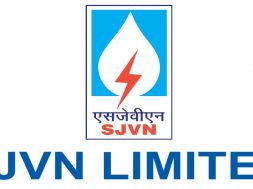
India Ends Centralized Renewable Tariff Pools to Unlock Stalled Green Energy Projects – EQ
The government has decided to revoke the uniform tariff mechanism for renewable energy projects, a move that will dissolve the central pricing pools set up to standardize rates across the country. This marks a significant shift from the earlier approach introduced in February 2024, when the Solar Power Central Pool and the Solar-Wind Hybrid Central Pool were created to bring price uniformity and encourage large-scale adoption. Officials say the decision aims to remove constraints that had slowed down project agreements and hindered investments.
Industry insiders had long expressed concern that fixed tariff structures were creating uncertainties for both buyers and developers, particularly when market conditions shifted after bid submission. With prices locked into a centralized system, negotiations became inflexible, and state utilities often hesitated to sign Power Sale Agreements, leaving several projects in limbo. The removal of these pricing pools is expected to allow parties to negotiate terms that better reflect current market realities.
Developers will now have the freedom to set tariffs through direct discussions with power buyers, including distribution companies and commercial consumers. This could improve financial viability for projects, especially in the face of fluctuating equipment costs, interest rates, and foreign exchange variations. The government hopes that by restoring price discovery to a market-driven process, stranded renewable projects will find a path forward.
According to industry data, more than 50 gigawatts of renewable energy capacity in India has been stalled due to issues with PSA signings and tariff disagreements. Many of these projects had secured Letters of Award but could not move to execution because the uniform tariff framework left little room to adjust for economic changes. The latest policy change seeks to clear this backlog and speed up commissioning timelines.
Importantly, bids already invited and contracts already awarded under the uniform tariff mechanism will remain valid. Developers and implementing agencies can continue with these projects using the agreed terms, but they will also have the option to finalize Power Purchase Agreements outside the central pool structure if it benefits both parties. This transitional measure is meant to protect investments and maintain policy credibility.
The shift away from central pricing pools is also expected to influence investor sentiment. By reducing regulatory rigidity, the market could become more attractive to private and international financiers who have been cautious about inflexible revenue models. A more negotiable tariff framework can potentially lower the perceived risk in project financing.
State-level procurement is likely to play a bigger role in the post-pool era. Without a central mechanism dictating tariffs, states can tailor procurement strategies to their specific demand patterns and renewable resource availability. This could lead to greater regional diversity in tariff structures, reflecting local economics rather than a national average.
However, the move may also introduce challenges in ensuring transparency and fairness in pricing. Market-based negotiations could lead to disparities between states and developers with varying bargaining power. Analysts suggest that careful regulatory oversight will still be necessary to prevent exploitative pricing or non-competitive practices.
Overall, this policy reversal reflects a broader shift in India’s renewable energy strategy—from a centrally controlled, uniform approach to a more flexible, market-responsive system. With the government targeting 500 gigawatts of renewable capacity by 2030, the success of this new framework will depend on how effectively it balances competitive pricing with project bankability, ensuring both accelerated deployment and sustained investor confidence.












